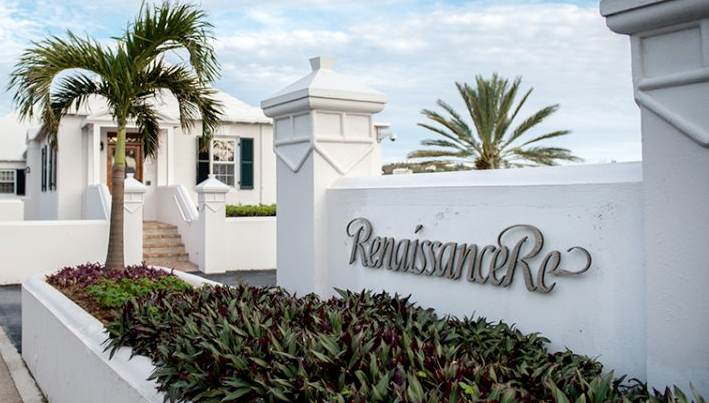RenRe raised $403m from investors for 1/1. Where it flowed is telling

RenaissanceRe, the global reinsurance firm and third-party capital manager,raised an additional almost $403 million of capital from third-party investors in time for the January 2023 renewal season, with the vehicles benefiting being its DaVinci Re sidecar and its catastrophe bond fund Medici.
Reporting its quarterly and full-year results yesterday, RenaissanceRe (RenRe) provided some insight into another successful period of capital raising.
But, while the RenaissanceRe Capital Partners team has clearly proved one of the best at raising funds over the last year, where those funds have headed to, in terms of its strategies, is telling of the overall insurance-linked securities (ILS) market and in particular investor appetite for collateralized reinsurance and retrocession.
During 2022, RenRe said that it raised a total of $1.4 billion of third-party capital for its range of joint-venture vehicles and ILS structures or funds.
This capital flowed to many of its vehicles, with the equity-backed but balance-sheet sidecar-like DaVinci Re receiving $462.7 million, the Medici catastrophe bond focused ILS fund $350.1 million, the Fontana casualty and specialty risks joint-venture vehicle $273.7 million, the Vermeer Re rated reinsurer that is funded by pension investor PGGM $250 million, and finally RenRe’s Upsilon fund that allocates to collateralized reinsurance and retrocession just $79 million.
That’s the first data-point which is telling, that the Upsilon strategy has been far more challenging to raise new third-party capital for right the way through 2022.
$123 million of third-party capital was raised in the fourth-quarter of 2022, RenRe said, of which $120 million was a further contribution to PGGM’s rated joint-venture reinsurer with the company.
At the same time, in Q4, $224.6 million of third-party capital was redeemed from the Upsilon fund structure, which RenRe noted reduced its size, but was “as a result of the release of collateral associated with prior years’ contracts,” suggesting investors in Upsilon recovered more of their capital that had been trapped due to previous catastrophe loss activity.
As we reported, $254 million of trapped capital was returned from Upsilon to its investors during the first nine-months of 2022.
Overall, through full-year 2022, RenRe reported that it saw $687.6 million of third-party capital redemptions, the majority at $425.8 million being related to the Upsilon vehicle, and the remaining from DaVinci Re and Medici.
All of which provides another clear sign on where investor flows are heading, into and out of, with lower capital raised and more departing from Upsilon than any other vehicle RenRe manages, again a reflection of investor appetites in the ILS market through 2022.
The final signal, as to ILS investor appetites, comes with the fresh capital raise for January 2023’s reinsurance renewals.
RenRe reports that it raised almost $403 million of third-party capital effective January 1st, with $377.2 million flowing to the DaVinci Re sidecar like vehicle and the remaining flowing to Medici.
So, despite the significant hardening of reinsurance and retrocession rates, plus the reduced availability of capital, which might have been considered a significant deployment opportunity for the strategy, there was still nothing raised for Upsilon for 1/1, it seems.
On top of the capital raising for managed vehicles, RenRe also raised $185 million through its recent Mona Lisa Re Ltd. (Series 2023-1) catastrophe bond issuance.
RenRe continues to benefit from its growing third-party capital vehicles, as this has helped the reinsurance firm to reduce its use of retrocession, it reported last night.
The reduction in retro purchases, as part of its gross to net strategy, comes as growth in managed third-party capital vehicles has supported the firm’s underwriting activities.
Fee income earned through the third-party capital management activities at RenRe was roughly flat year-on-year in Q4 2022, at $30.347 million, compared to $30.022 million in the prior year.
Management fees were up by almost $1.3 million, signalling more capital under management in most vehicles apart from Upsilon which declined and a reduction in structured reinsurance activities, but performance fees dropped by almost $1 million.
In addition, RenRe has reported a deferral of management fees earned from DaVinci Re, because of weather-related large losses experienced in the current and prior years, which hit performance fees earned.
For full-year 2022, fee income came out at $118.7 million, down $9.8 million from 2021.
It was performance fees that took the hit that reduced the overall fee income from third-party capital management for RenaissanceRe, with the losses from hurricane Ian likely a significant driver of that.
While RenRe continues to earn attractive fees from its third-party capital management business, the investors backing the structures continue to benefit as well.
The reinsurance firm reported that net income attributable to redeemable noncontrolling interests was $236.4 for Q4 2022, which was driven by strong underwriting results for DaVinci and Vermeer.
However, for the full-year, third-party investors overall took a net loss of $98.6 million, driven by realised and unrealised losses on investments in DaVinci, Vermeer, Fontana and Medici, including losses on Medici’s catastrophe bonds portfolio, the impact of weather and catastrophe losses to DaVinci, Vermeer and Medici, offset by net investment income in Vermeer.
Non-controlling interests took $411.7 million of catastrophe losses in 2022, $287 million from hurricane Ian, $87.4 million from other events, plus almost $37.4 million from aggregate events.
RenRe itself experienced a full-year net loss of almost $1.16 billion, with an $820 million net negative impact to the underwriting result from hurricane Ian the main driver.
It also reported 21.2% growth in net premiums written in 2022, with 41.6% growth in Casualty and Specialty lines.
Kevin J. O’Donnell, President and Chief Executive Officer, commented on the results, “We finished the year with an excellent quarter, reporting an annualized operating return on average common equity of 29.6% driven by strong underwriting results, significantly increased net investment income and stable management fees.
“For the full year, we delivered a 6.3% operating return despite a net negative impact of $807.6 million from catastrophe losses.”
Importantly for those allocating fresh capital to RenRe’s third-party capital and ILS structures in time for the reinsurance renewals, O’Donnell has a positive view on the portfolios constructed, it seems.
He said that, “At the January renewal we demonstrated leadership and discipline, achieving the step change in rate and terms investors required, while providing the reinsurance capacity customers needed.
“We enter 2023 with expectations of continuing strong demand for our products, ample capital to meet this demand, and anticipation of one of the most successful years in our history.”
The fact RenR’s Upsilon ILS fund vehicle appears out of favour is no real surprise, having experienced significant losses over recent years, like many of the collateralized reinsurance funds with a focus on retrocession (particularly aggregate covers).
It’s going to be interesting to see if RenRe can rekindle interest in the strategy, now rates and pricing are so much higher, while the retro product itself has also been tightened up.







